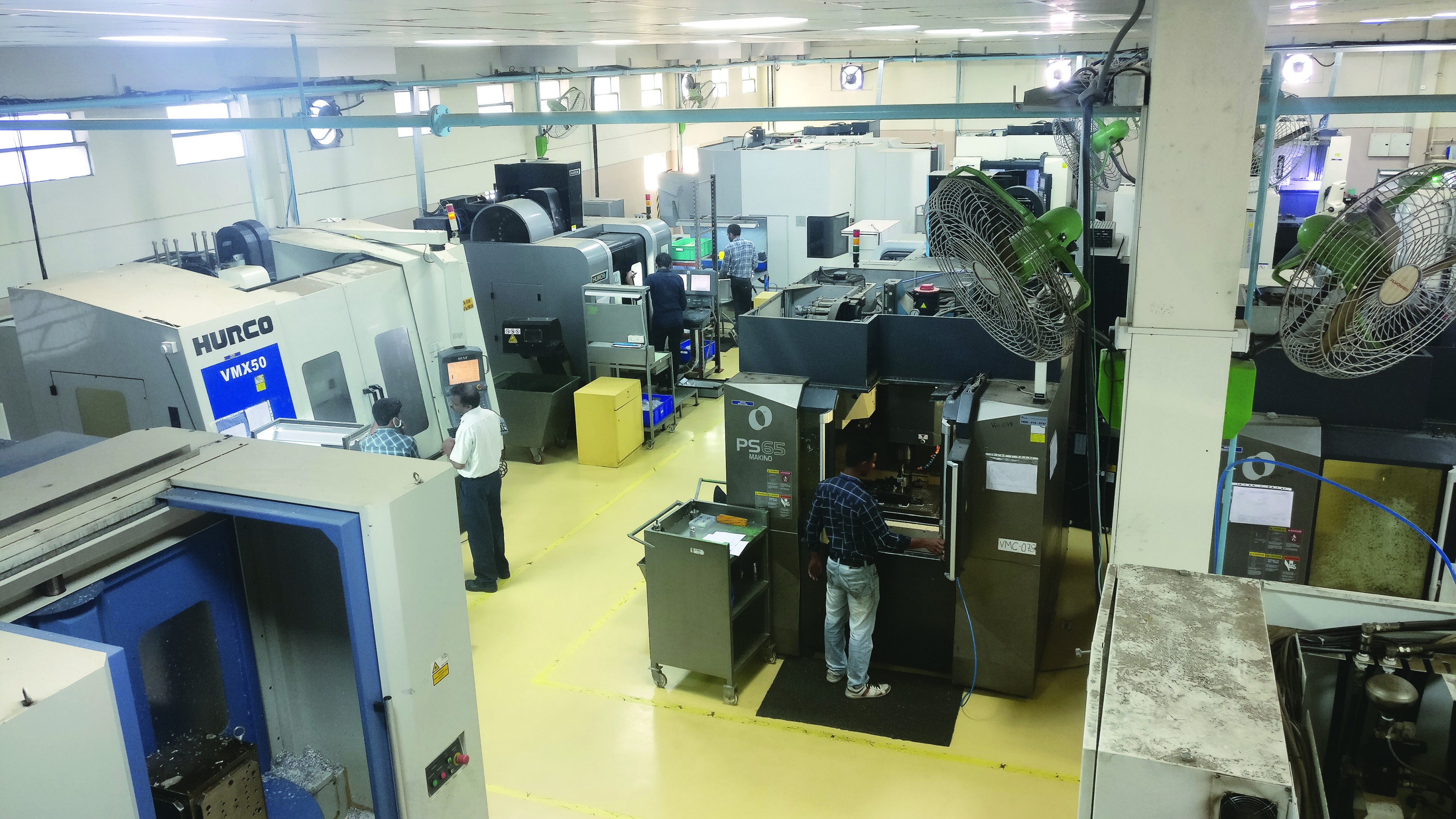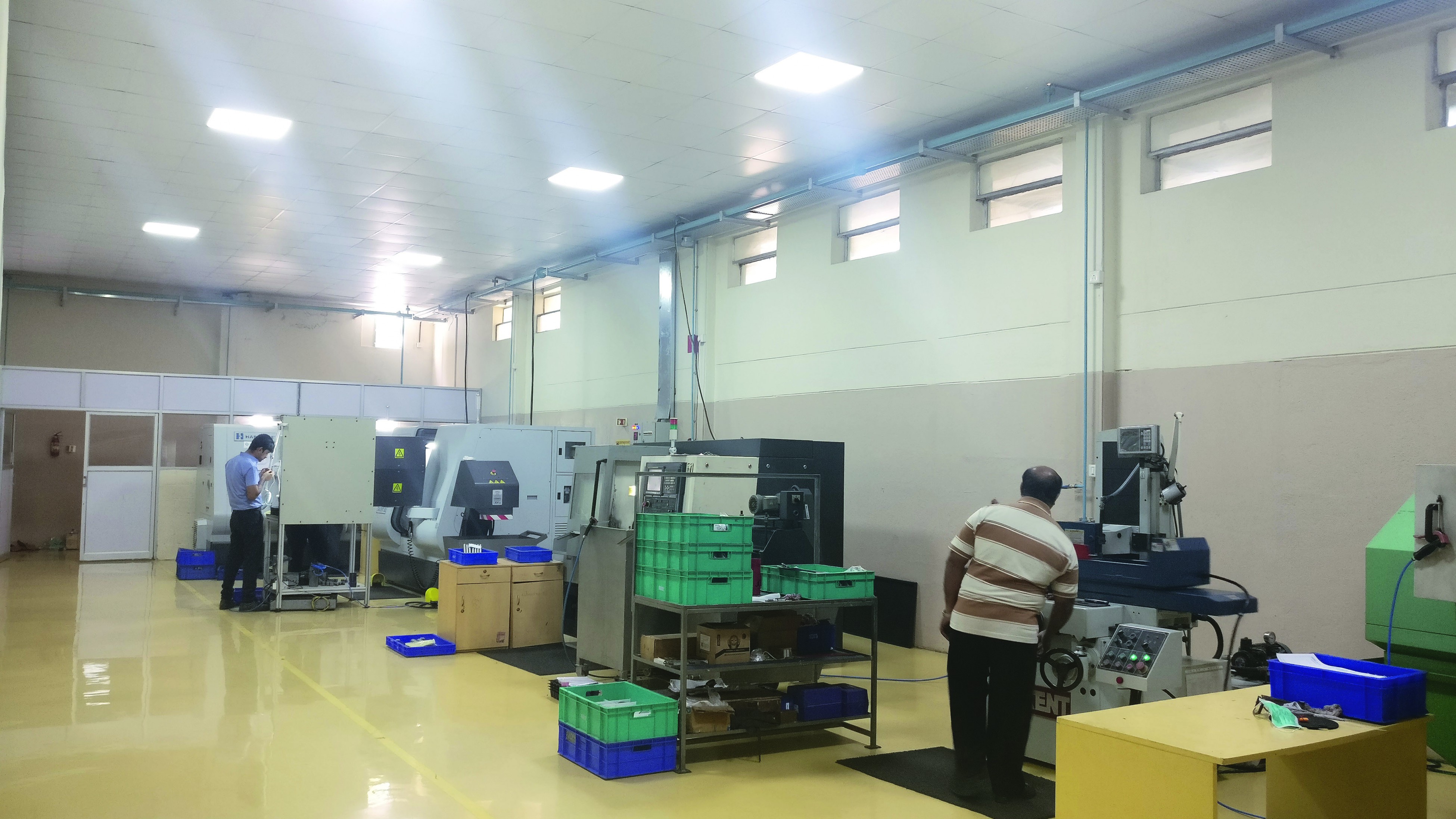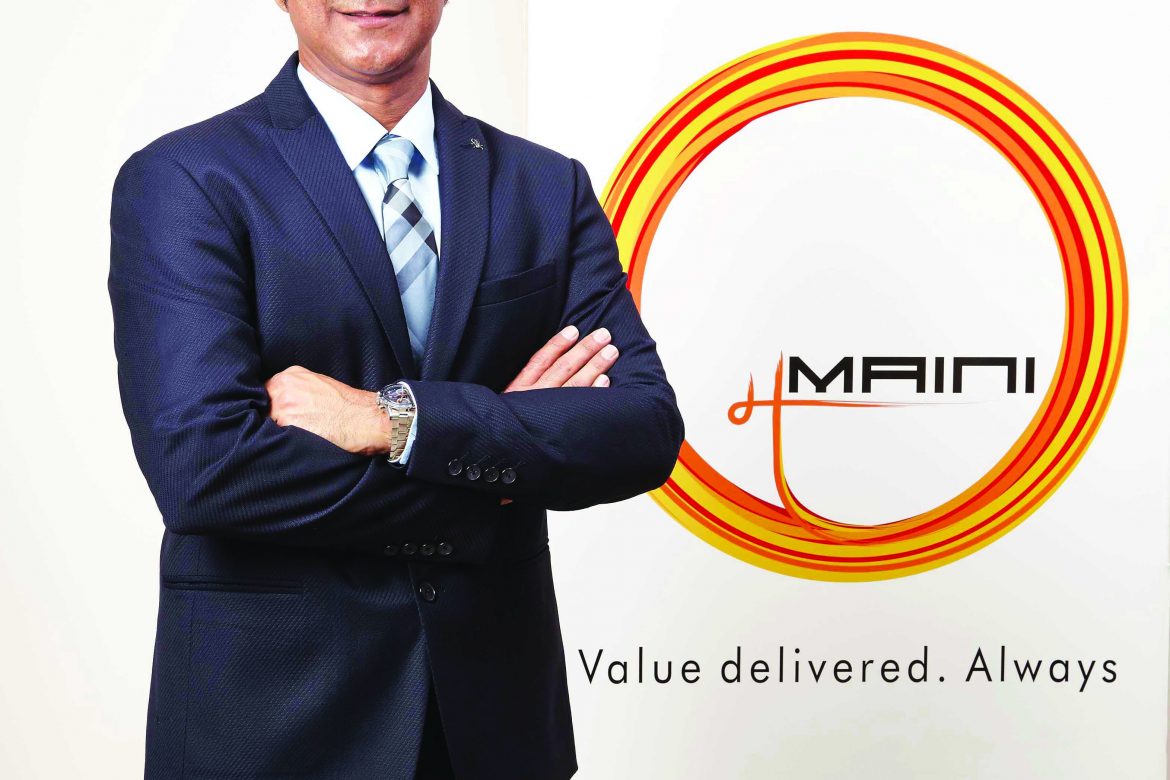A deep dive into the strategy and leadership vision of Gautam Maini, MD, Maini Precision Products, who has led MPP to place it firmly on the world’s precision-engineering map.

Maini Precision Products (MPP), the leading manufacturer and supplier of high-precision components to automotive, industrial and aerospace companies, is one of the fasted growing Maini Group companies. In May 2017, a Maini Group statement said that it expects to achieve Rs 1,000 crore turnover annually in the next three years, a significant part of which will come from MPP’s automobile and aerospace businesses. In November, 2017, MPP crossed another milestone when it inaugurated its new dedicated aerospace manufacturing plant at Bommasandra Industrial Estate, Bengaluru. DMI got the opportunity to interact with Gautam Maini, Managing Director, Maini Precision Products, who has led MPP to position it on the world’s precision engineering map. We spoke with Mr Maini on a range of subjects, including his growth strategy which has proved phenomenally successful, his partner selection process, his views on Industry 4.0 and Make in India, among others. Presenting, edited excerpts.
To what factors do you attribute MPP’s fast growth and the fact that it has been able to secure long-term partnership with leading industry names such as Marshall Aerospace and Safran Aircraft Engines?
MPP has been a highly customer-centric and quality-focused company, like the rest of the Maini Group companies. Our tagline in our logo ‘Value delivered. Always’ signifies our approach by which we deliver value and solutions to customers; not just a product or a service. We have constantly endeavored to bring higher value to our customers. Our core competence is our one-stop approach for any Build-to-Print requirement which has enabled us to form
long-term partnerships with many of the
industry leaders.
Your growth strategy has proven to be very successful. You have stated that you believe in creating a partner ecosystem rather than having a captive ancillary type of a setup – could you elaborate on this strategy, and how it is paying off.
The basic difference it is that we do not approach customers with products; we approach the customer with solutions. What kind of solutions are the custo-mers looking for? Most customers are looking for very reliable, one-stop shop, efficient manufacturing units that are competitive and great on quality. They don’t want to deal with hundreds of suppliers; they want to deal with three or four very good suppliers who can give them everything they want. That means that we should be able to handle a wide variety of products, because if I made just one or two products, then the customer knows that I may be offering a great product or two, but I am not offering a solution. The right strategy is to offer the customer a solution which means I go back and say: “We have suppliers who makes casting for us, do forging, die-casting, shell-moulding, heat-treatment service and so on – We have suppliers who can give us all of these. In a sense, we don’t have to go back to invest in a lot on these facilities because of our relationships with suppliers built over many years. This is the advantage of having these ecosystems. Now I can ask my customer: “What do you want?” They would say: “I want 20 different part numbers, some casting, some forging, assemblies, I want it kitted,
I want just-in-time delivered anywhere in the world.” They can come to us and we can provide all the advantages of these ecosystems that we created over the last 44 years. Then finally give them a reliable product on time, delivered JIT anywhere in the world. Therefore we offer strategic solutions where we can give customers a wide variety of solutions, not just a few products.
In May 2017, a Maini Group statement said that it expects to achieve Rs 1,000 crore turnover annually in the next 3 years, a significant part of which will come from MPP’s automobile and aerospace businesses. Could you please share with us a roadmap of how MPP aims to achieve the stated goal in terms of expansions and initiatives?
In aerospace MPP has systematically worked in the three verticals of Engine Components,
Aircraft Systems and Aircraft Structures. Towards our target of reaching turnover Rs.1,000 Crore in the next 3 years, we have continuously invested in not only new machinery and equipment but also in creating new production facilities in anticipation of growth opportunities. As an example, we have just finished completion of Phase I of our new factory dedicated for aerospace. After completion of Phase II in the Q II of 2018, the aerospace facility will have a dedicated plant area of appx. 1 lakh sq. ft. Our focused approach in each of the vertical is signified by the recent long term contract with Safran Aircraft Engines for the Nozzle Guide Vanes of Low Pressure Turbine for the state-of-the-art LEAP engines. We have also Expanded our Automotive and Industrial side of the business by adding a 75000 Sq Foot Facilty which will allow for a Higher Rate of growth. Besides MPP; Maini Materials, Maini Plastics, and Composites and Virya Mobility all have strong growth plans to help the group achieve its growth objectives.

You have said in an interview that, at your new manufacturing plant at Bommasandra, you have invested in technologies which would be introduced for the first time in the India private sector. What are those technologies? Did you refer to technologies such as stelliting, vacuum brazing, etc.?
We are introducing new technologies like Stelliting, Creep Feed Grinding, Vacuum Brazing and EDM Erosion on honeycomb assemblies and other allied technologies. These are helping us to build the manufacturing ecosystem for the new Leap Engine from Safran, which as you know is a major breakthrough for a private firm in Indian aviation industry. These technologies enable us to equip ourselves to manufacture mission critical parts that form flow path of an aero engine. That clearly signals the path that we want to take. The Bommasandra plant is a dedicated facility for Aerospace having high potential to add on more advance technologies to expend its horizon on Aero products.
In the interview you refer to, I was talking about a new facility for Automotive and Industrial manufacturing. We opened two new facilities in November last year. The Automotive and Industrial plant that I mentioned in the interview was opened at Peenya, Bengaluru.

What is your perspective, in terms of implementation and adaptability, of the paradigm of industry 4.0 – where leading manufacturers like Siemens and Bosch are making their factories smarter with the use of industry 4.0 technologies such as additive manufacturing, Internet of Things and cognitive computing etc. In other words, does MPP have industry 4.0 in the cross-hairs?
MPP has always believed in having strong systems at its core. Industry 4.0 is something that has to be adopted over a period of time. At MPP we have been running prototypes for many months now and we are at the point where we are selecting our partners to take us through the journey. We strongly believe that a Connected Factory will benefit hugely in terms of competitiveness as well as customer satisfaction and customer delight.
What types of prototypes are being developed and provided at MPP and what are the kind of partners you looking at to be a part of these innovations?
Although I can’t name the particular projects [due to commercial confidentiality] but I would like to say that we have reached a stage where we are planning 50 new parts every month. In order to do that you have to have very robust systems so that the team is effective. We have implemented an Aero Lean System with a partner which gives us the accuracy and speed while developing new Parts. These parts now have to be successfully transitioned to ramp up to production volumes. When you have a complex machine shop, it’s not easy to monitor and control all of the operations from one point. What we have done is, connect to the level of each individual machine. One can monitor each machine and its efficiency online – whether it is loaded or not. When a machine is about to run out of material, typically [at other plants] the operator punches in a code that goes to the supervisor who will then take it to the manager and so on. In our case, the message will go directly to the phone of the purchase guy who is responsible for that material. When you talk about a connected factory, you make sure that the decisions are quick and simultaneous. And not create a hierarchical structure that typically is found in an Indian organization today, where it will go all the way up, then sideways, and will come all the way down by which time the damage would’ve already been done. The whole idea of having a digital 4.0 in my opinion is to make a factory which is connected in terms of efficiency, inventory, tool management, fixture management, decision-making process, basically everything that you need to make the factory progressive.
In terms of quality we are looking at how we can automatically capture the information. So we have a [manufacturing plant] gate which has Bluetooth that automatically captures information. We are working with partners where we can get our run-charts online. We don’t want a system where operators have to handle the machines manually and then pick up a pen and start writing or reading the charts. That’s an added cost, that’s not added value. We pilot such projects in one of the units before we take it to another; it’s a long but a beneficial process.
To me, Industry 4.0 is not just a term. It evolves from everyday learning, about how it can be adopted and implemented in a company of a particular size and scale. Those are the real challenges. [About partnering with companies on prototypes] The rule should be that you give your potential partner a thorough idea of your background, your thought process and your budget, which can vary.

Can you give us an idea of the collaborative process which follows the selection of partners?
As far as Industry 4.0 is concerned, we went through at least eight to ten partners before we decided on prototyping with three of them. We did a high level of due diligence on trying to understand the product, understand the budget, and understand the viable process of implementation like a regular process.
For instance, you have the Ace Micromatic that has a division that runs a TPM track. So you have a module that you have to see how it connects into a Fanuc system or any given system. So we did all of that to understand duly how this connectivity happens. You also have Zeiss that integrates Quality systems very effectively. Our prototypes are still running and very shortly we will take a final decision.
Ensuring continued success in the automobile and aircraft high-precision components business requires availability of highly skilled engineers. Could you share with us best practices you use for hiring of best tech minds, and their training and skill development?
Our Human Resource has always been the prime asset in helping us build a consistent growth. We have in place very structured internal world-class programs for training the technical personnel. The technical university of one of our major customer organizations has applauded our training system. Apart from in-house training exposure, for our supervisory and managerial staff as well as technicians, we arrange on-the-job skill enhancement at the plants of our customers, associates, and a wider circle of machinery manufacturers. Aside from these essential elements, we have always believed in creating a professionally challenging environment to keep the team highly motivated. We maintain a very flat organization structure and the personnel are enabled a high level of decision making freedom, maintaining an invigorating professional climate.
How do you view the progress of mission Make in India and the new Defence Procurement Procedure (DPP) policy in that context?
We have always believed in Make in India – you know as a company till 2003, we only had Bosch as an Indian customer because their quality standards were really high and we learnt a lot from them since our inception in 1973. Our model has been very simple and clear; we follow an export-oriented and an import-substitution model. We only like to do things that are challenging, whether it’s in automotive or industrial or aerospace. We like to be in the more difficult areas of these spaces so that we are not one of the hundreds that are trying to do something, but we are among the few which could possibly do it. Obviously aerospace has a big learning curve. Since we started about twelve years ago, we have progressed to a level where we are starting to take more and more complex work in all the different categories. So Make in India is in our DNA whether it’s for export or localization. Obviously it opens us more opportunity because you have already dealt with customers, you markets have been set, your quality of your products have been well established , they know you are capable of making complex product and now all of a sudden they have an incentive to place more business with you. So that makes life much easier for companies like us where the government is incentivizing that it has to be made in India. To that extent definitely it will help all of us, because the policy supports Companies for Make in India and therefore it will only lead to better times. I do think that the government is in the right direction offering the right level of incentives and engagement.
The Maini group also contributes towards the Govt. Policy making process actively through the industry associations. The DPP has evolved well since its inception and it is encouraging the Government has shown willingness to incorporate industry view points and suggestions for improvements.
How do you see your role in India’s indigenous defence industry in light of the new DPP policy?
Maini Precision product is very aligned to the aerospace manufacturing. What helps is that the volume of business coming from commercial aerospace customers from all over the world is very high. Therefore we are very happy and progressing in that area. As far as the defence sector is concerned, Maini Materials Movement is playing a very significant role thanks to our background in off-road electric vehicles and the fact that today we are supplying a lot of locally-built vehicles for the forces in many areas. We are able to utilize the knowledge and abilities of our products in material handling and racking and handling complex projects with electric-vehicles technology built into it. We see a very promising future in this area. Today all the airports are working to go Green; we are the only indigenous manufacturer of the electric Tow Trucks which is used to pull the baggage or pull lighter aircraft and helicopters. Also when you see the golf carts– or buggies as some people call them – at the airports; these are all Maini buggies which is again a manifestation of the strength that we have in the off-road electric vehicles space. If you go to places like the Bengaluru railway station, you will see Maini buggies in operation. So wherever the last mile has to be electric, whether it’s at the airport or a railway station, we are very much involved in ushering in the sustainability revolution.


